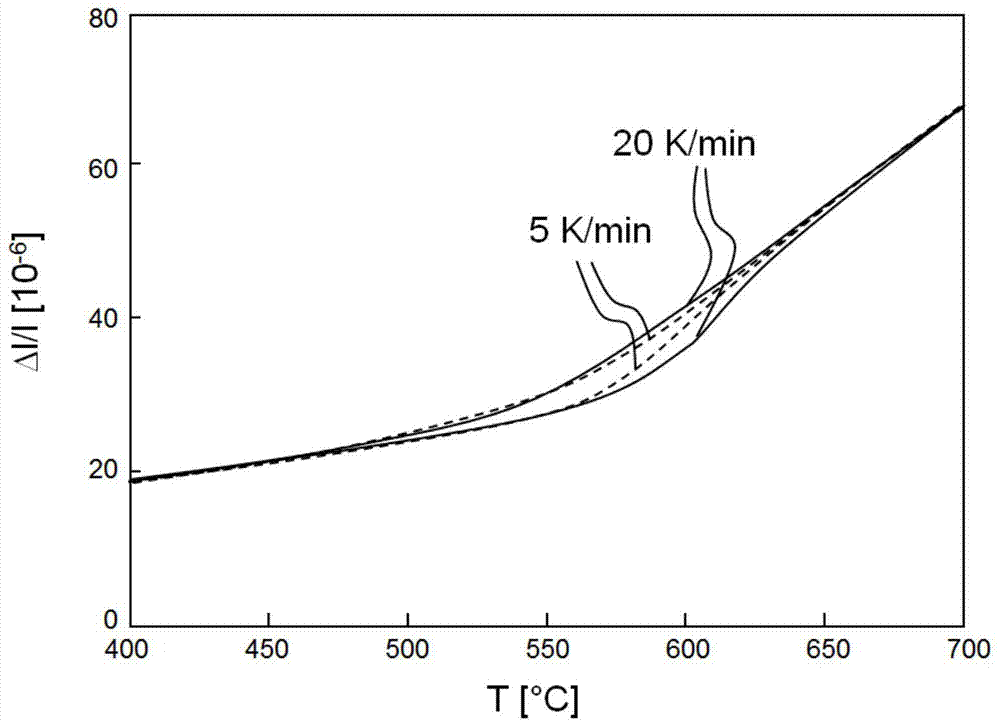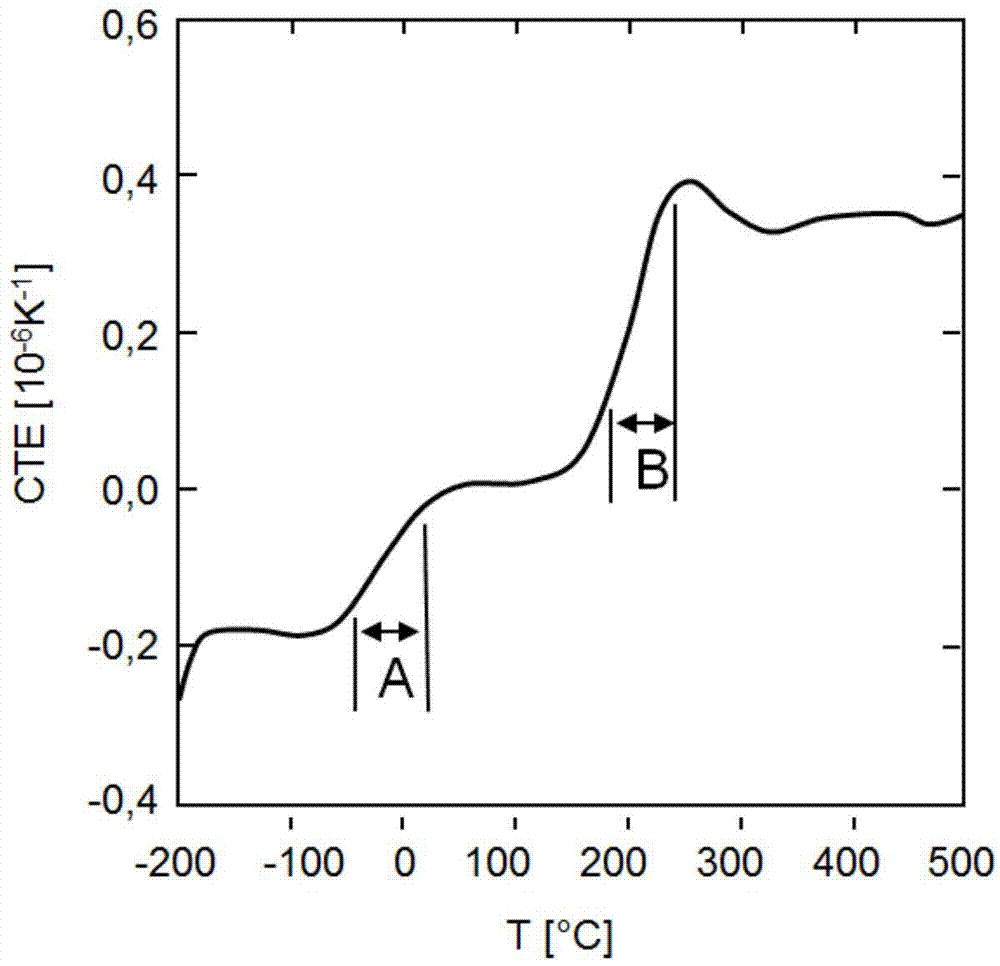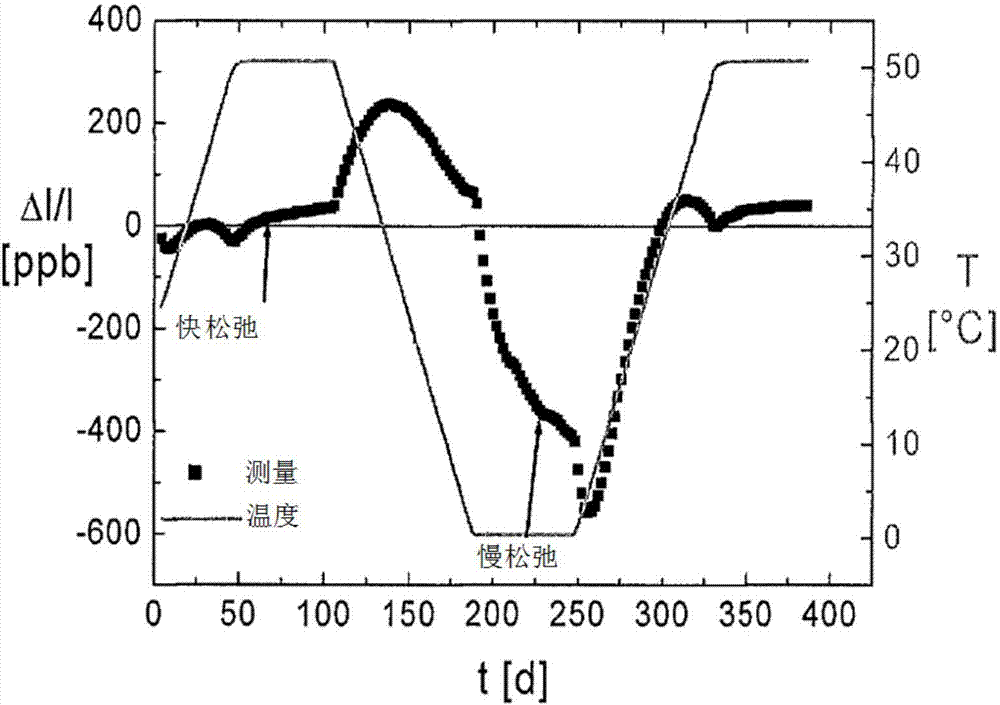Method for determining time-delayed changes of temperature-dependent or stress-dependent physical quantities of a glass or a glass ceramic
A glass-ceramic, time-delayed technique used in the manufacture or furnishing of glass or glass-ceramic articles
- Summary
- Abstract
- Description
- Claims
- Application Information
AI Technical Summary
Problems solved by technology
Method used
Image
Examples
Embodiment Construction
[0063] Within the glass transition range (transition temperature T as defined in ISO 7884-8 g Nearby) the mathematical modeling of atomic structure relaxation and stress relaxation is known and used in the mathematical modeling of thermomechanical processing methods of glass in the glass manufacturing and processing industry. Implement the model in FEM calculation software (such as ANSYS). From O.S.Narayanaswamy, "A model of structural relaxation in glass", J.Am.Ceram.Soc.54,491-498 (1971), it is known that the glass transition temperature T g A range of models that describe these structural relaxations with sufficiently good modeling quality. Structural relaxation is viewed as a transition from a non-equilibrium state of the glass structure to an equilibrium state (atomic rearrangement process).
[0064] Glasses are distinguished by the fact that non-equilibrium states can solidify. Depending on the thermal conditions (fast / slow cooling), the glass solidifies in different ...
PUM
 Login to View More
Login to View More Abstract
Description
Claims
Application Information
 Login to View More
Login to View More - R&D
- Intellectual Property
- Life Sciences
- Materials
- Tech Scout
- Unparalleled Data Quality
- Higher Quality Content
- 60% Fewer Hallucinations
Browse by: Latest US Patents, China's latest patents, Technical Efficacy Thesaurus, Application Domain, Technology Topic, Popular Technical Reports.
© 2025 PatSnap. All rights reserved.Legal|Privacy policy|Modern Slavery Act Transparency Statement|Sitemap|About US| Contact US: help@patsnap.com



